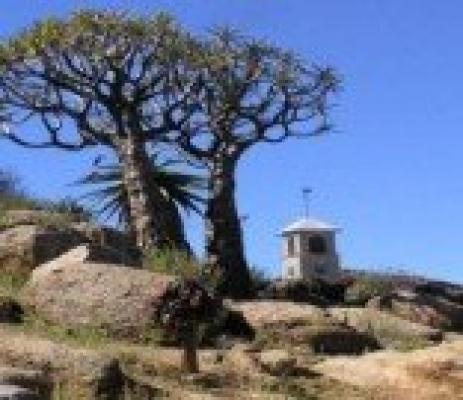Springbok lies in a deep low plain between rugged mountains, about 600 km north of Cape Town. It is the commercial and cultural center of Namaqualand, located directly on the N7 which connects the Cape and Namibia.
The small Namaqualand towns of Pofadder, Garies, Kleinzee, Port Nolloth and Alexander Bay all within less than one and a half hours drive from Springbok. It is also close to the famous Namaqualand wildflower reserves and to the remote Richtersveld National Park.
Copper was discovered on the farm Melkboschkuil in 1850 and a mine was established. The mine became the first commercial mine in South Africa, but was worked out by 1888. In 1863 the town was mapped out and built around the copper mining industry
Today Springbok is a prosperous town with 15,000 inhabitants. The main income is generated from tourism, mining activities, commerce and farming. Springbok offers many attractions, historical sites, museums and fine restaurants.
Attractions in and around Springbok include:
- Dutch Reformed Church (or Klipkerk). The Church was built in 1921.
- Mineshaft dug in 1685 on Simon van der Stels instructions
- Monument Koppie in the town centre. Wrested from the British by Boer forces, commemorates the Anglo-Boer War (1899-1902).
- Namaqualand Museum in the old synagogue.
- Skilpad Wildflower Nature Reserve
- Wild flowers during August / September
- Augrabies Waterfall
- Namakwa 4x4 Route starting at the picturesque Pella Mission Station, the Namakwa Route follows the Orange River 642km to the sea.
- Orbicule Hill 22km north-east of Springbok, contains orbicular diorite, previously only found in Scandinavia.
- Smelting Furnace to the north of Springbok, a national monument, unused since 1871.
- Spinning and Weaving On display at Komaggas, 50km along the Kleinzee road.
- War Graves
- Easy access, excellent accommodation and a well-developed commercial infrastructure makes Springbok an essential tourist stopover



